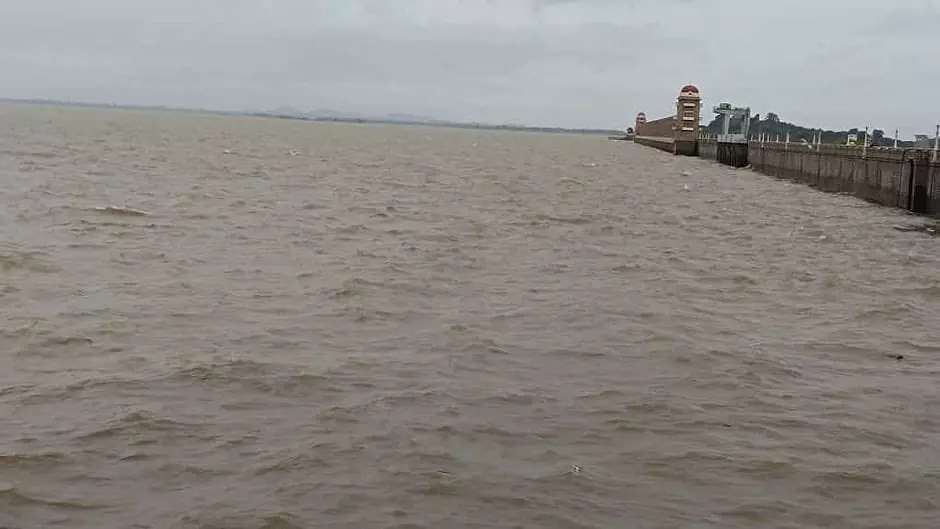Tungabhadra Dam Officials Issue High Alert amid Heavy Flood Inflows

Anantapur: The Tungabhadra dam authorities issued a high alert for low lying areas following heavy floods from upstream Western Ghats on Sunday.
The inflows had risen in the past four days as the Tungabhadra reservoir recorded 74.58tmc-ft level as against its total capacity of 105.78tmc-ft. On Sunday, TB dam received 1.12 lakh cusecs of inflows, double of the 10-year average. The inflow was just 13,340 cusecs on the same day last year.
The reservoir level was recorded at 1,624ft as against the maximum capacity of 1633ft. The TB board discharged 2324 cusecs of water as outflows into the river along with power generation. They sounded an alert to the low-lying areas and villages closer to TB river, towards the dam.
Superintendent engineer of TB high level main canal observed heavy floods from upstream to meet needs of Rayalaseema and chances to get more allocations from the reservoir this season.
The HLMC authorities were planning to store water in the Penna Ahobilam balancing reservoir and connect rivers along the Anantapur borders to utilise more water from the interstate project. A worse situation prevailed last year due to the deviation of the south west monsoon.
Another major project, Almatti under Krishna basin, was receiving heavy flows from the upstream regions, as the project was carrying a water of 100.13tmc-ft on Sunday as against its full storage capacity of 129.72tmc-ft. The Almatti dam authorities were releasing 1 lakh cusecs as outflows towards Srisailam and the connecting reservoirs following constant inflows of 87,217 cusecs.
As a result, the Jurala project was discharging 84,444 cusecs as outflows towards downstream and Narayanpur reservoir released outflows of 1.08 lakh cusecs due to constant floods. The Srisailam reservoir was receiving 65,172 cusecs from the upstream Krishan basin and the storage was around 40tmc-ft as against the gross capacity of 215.81 tmc-ft.
Irrigation sources from AP hoped that the Srisailam and connecting reservoirs were likely to get maximum inflows by August.

